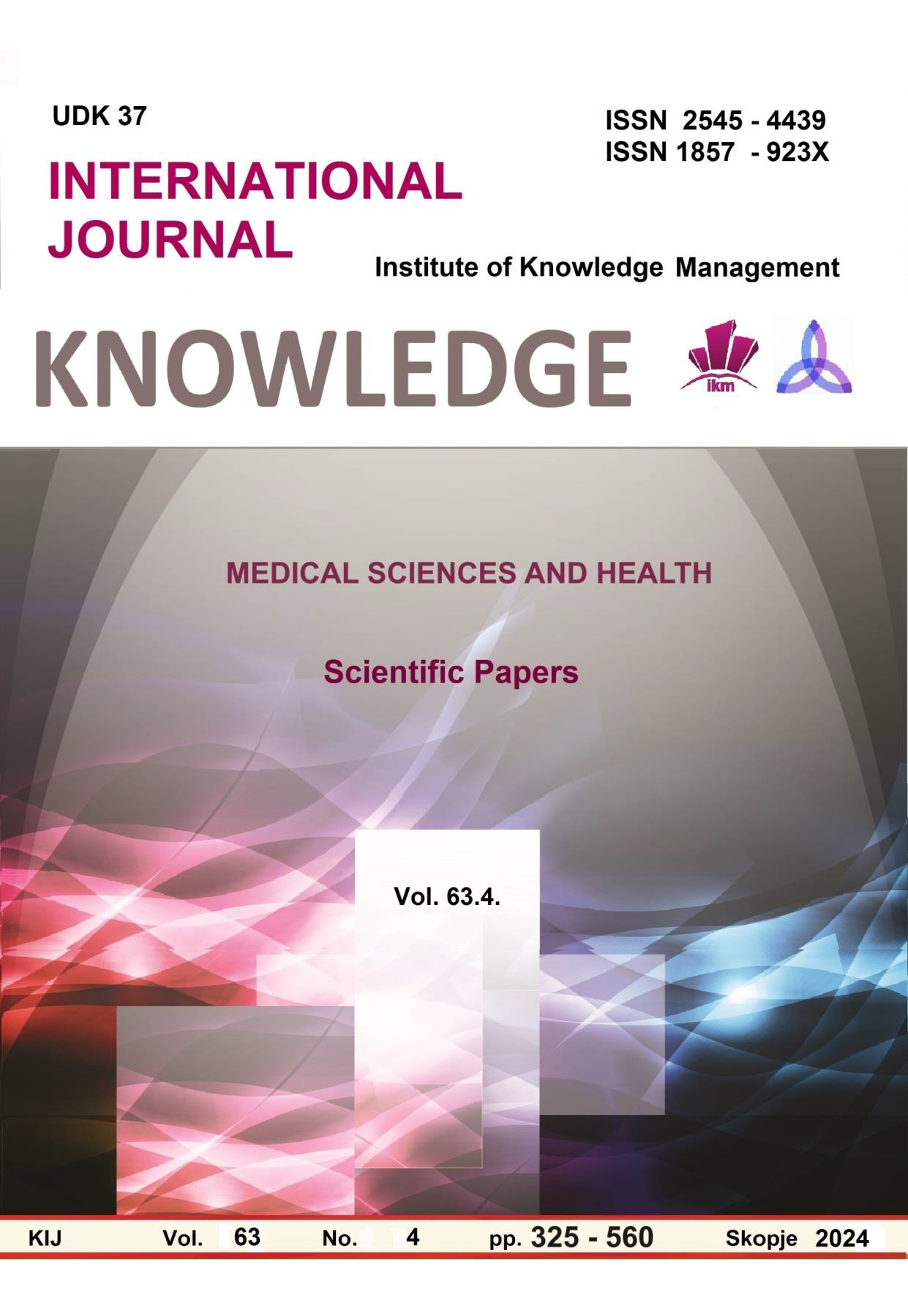SERUM FREE LIGHT CHAIN RATIO AND ITS CORRELATION WITH MARKERS OF TUMOR BURDEN AND PROGNOSIS AT INITIAL DIAGNOSIS OF MULTIPLE MYELOMA
SERUM FREE LIGHT CHAIN RATIO AND ITS CORRELATION WITH MARKERS OF TUMOR BURDEN AND PROGNOSIS AT INITIAL DIAGNOSIS OF MULTIPLE MYELOMA
Author(s): Oliver Georgievski, Sefedin Biljali, Jasmina Mecheska JovchevskaSubject(s): Social Sciences, Health and medicine and law
Published by: Scientific Institute of Management and Knowledge
Keywords: serum free light chain ratio
Summary/Abstract: Multiple myeloma is the most frequent malignant monoclonal gammopathy characterized by plasma cell proliferation and monoclonal M-protein production as consequence. Gold standard for diagnosis of monoclonal gammopathies are urinary and serum electrophoretic tehniques. Until recently, multiple myeloma was defined and diagnosed by damaged organs, particularly through hypercalcemia, renal failure, anemia and bone lesions. International Myeloma Working Group revised the criteria for multiple myeloma diagnosis by adding three biomarkers of malignancy effective in early recognition of patients who have not developed permanent organ damage. Those biomarkers are clonal proliferation of plasmocytes in bone marrow ≥60%, ratio of serum free light chains ≥100 with the included serum free light chain having an absolute concentration >100 mg/L and more than one osseus change on magnetic resonance imaging. This enables early beginning of an effective therapy in high-risk patients. Objective of the research was to evaluate the impact of serum free light chain ratio, total proteins and serum protein electrophoresis, as an initial panel for diagnosis of multiple myeloma, on beta 2 microglobulin and albumin, as markers of tumor burden and prognosis, at baseline and the differences between analyzed parameters in study and control group. Design of the research was a cross sectional study/study of prevalence conducted in the period of two months. Study group consisted of 7 newly diagnosed patients, before treatment, at 18 to 80 years of age. Control group consisted of 10 healthy individuals. All participants were included in the research after prior written informed consent. The concentration of serum free light chains (N-Latex Free Light Chains) and beta 2 microglobulin were determined nephelometrically on the plasma protein analyzer BN proSpec-Siemens (Siemens Medical Systems). The ratio was calculated by the analyzer software. Any result of the ratio <0.26 and >1.65 was considered pathological, depending on the involved component. Significance was determined at p<0.05. Electrophoretic examination of serum proteins was performed by gradient (4-22%) sodium dodecyl sulfate polyacrylamide gel electrophoresis. The confirmation of the diagnosis was obtained from the hospital information system of the Hematology Clinic in Skopje. For R = 0,99 and p<0,01 we found a high correlation between beta 2 microglobulin and serum free light chain ratio, total proteins and serum protein electrophoresis at baseline. For R = 0,98 and p<0,05 there was a high correlation between albumin and serum free light chain ratio, total proteins and protein electrophoresis in serum at baseline. Serum free light chain ratio results were significantly higher in study group p<0,05 (p=0,01). Beta 2 microglobulin results were significantly higher in study group p<0,01 (p=0,001). In conclusion, the results of the study confirmed the association between serum free light chain ratio and beta 2 microglobulin as an indicator of tumor burden in multiple myeloma, as well as with the biological characteristics of myeloma cells.
Journal: Knowledge - International Journal
- Issue Year: 63/2024
- Issue No: 4
- Page Range: 479-484
- Page Count: 6
- Language: English

